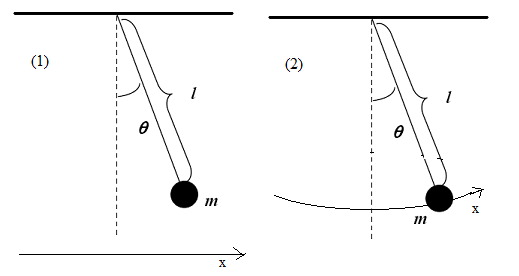For an simple harmonic oscillator energy can be represented as in picture. Consider in particular picture (b) with the energy as a function of the coordinate $x$.

Consider now a simple pendulum. The coordinate $x$ in (b) is the coordinate of an horizontal axis (as in picture 1) or the coordinate or the circular trajectory, as in picture 2.
The motion of the pendulum is indeed a one dimensional simple armonic motion, but the path followed is circular, so I guess that the "$x$ coordinate" of the graph (b) is the one in picture 2. Is that correct?

